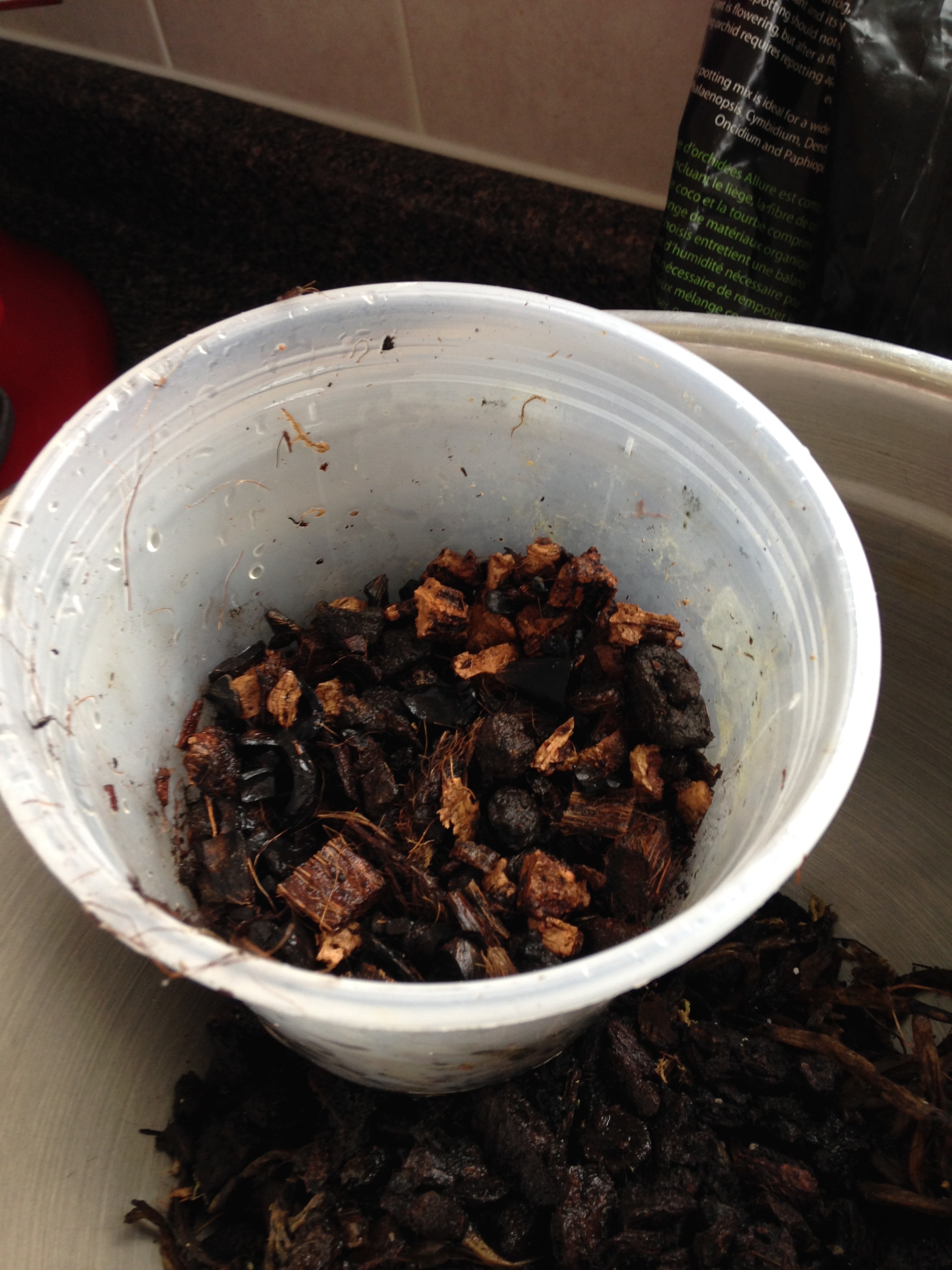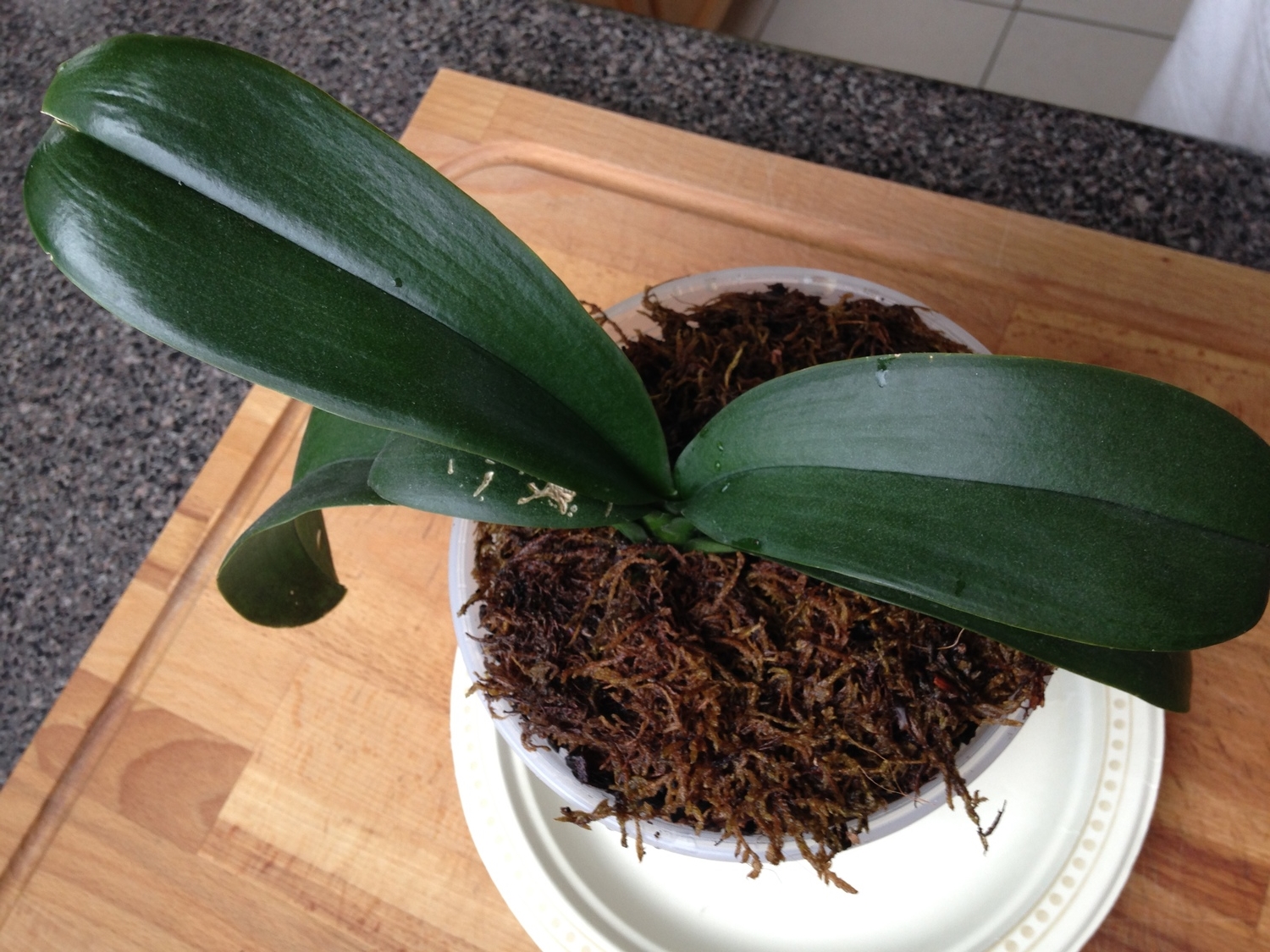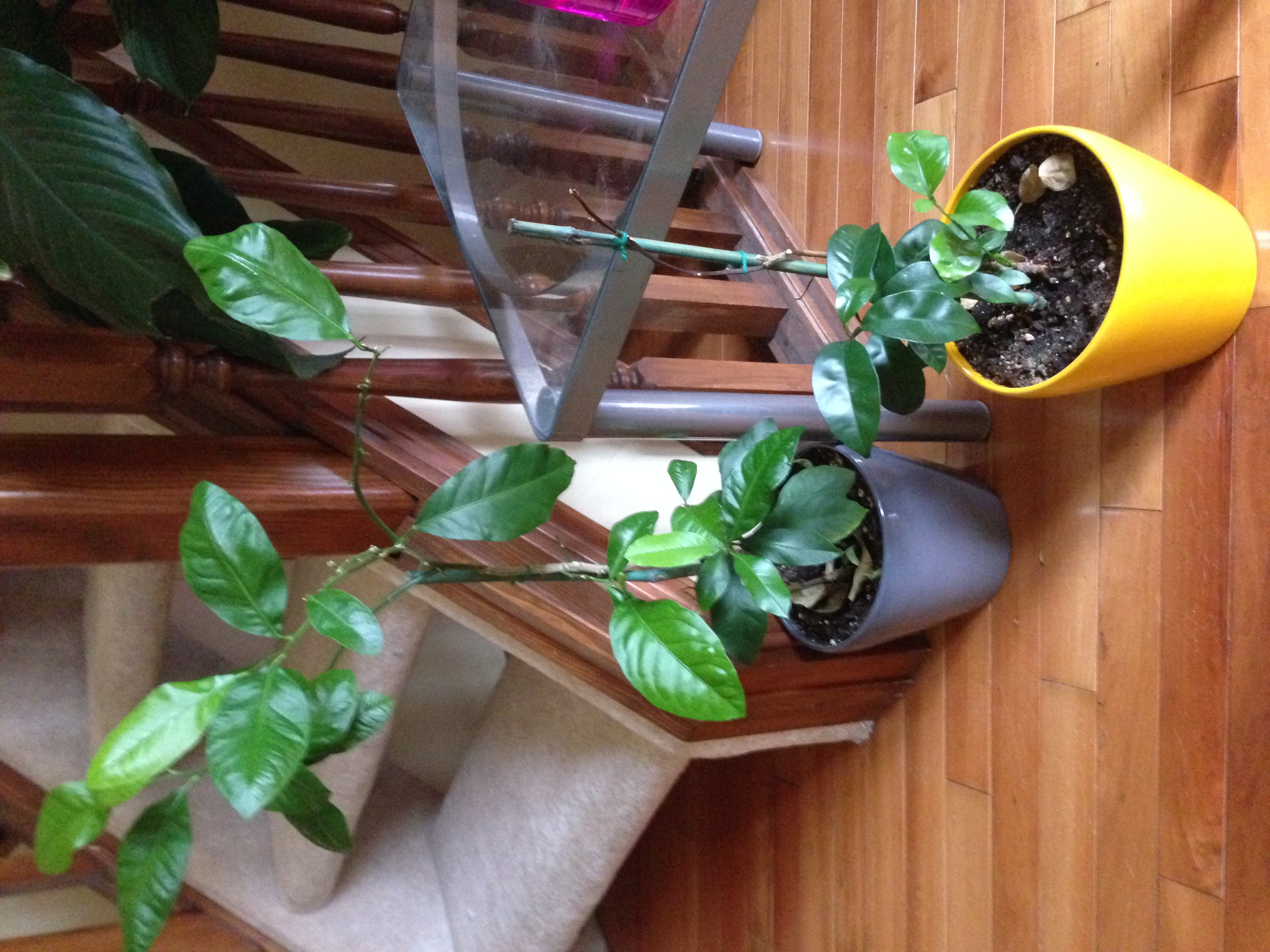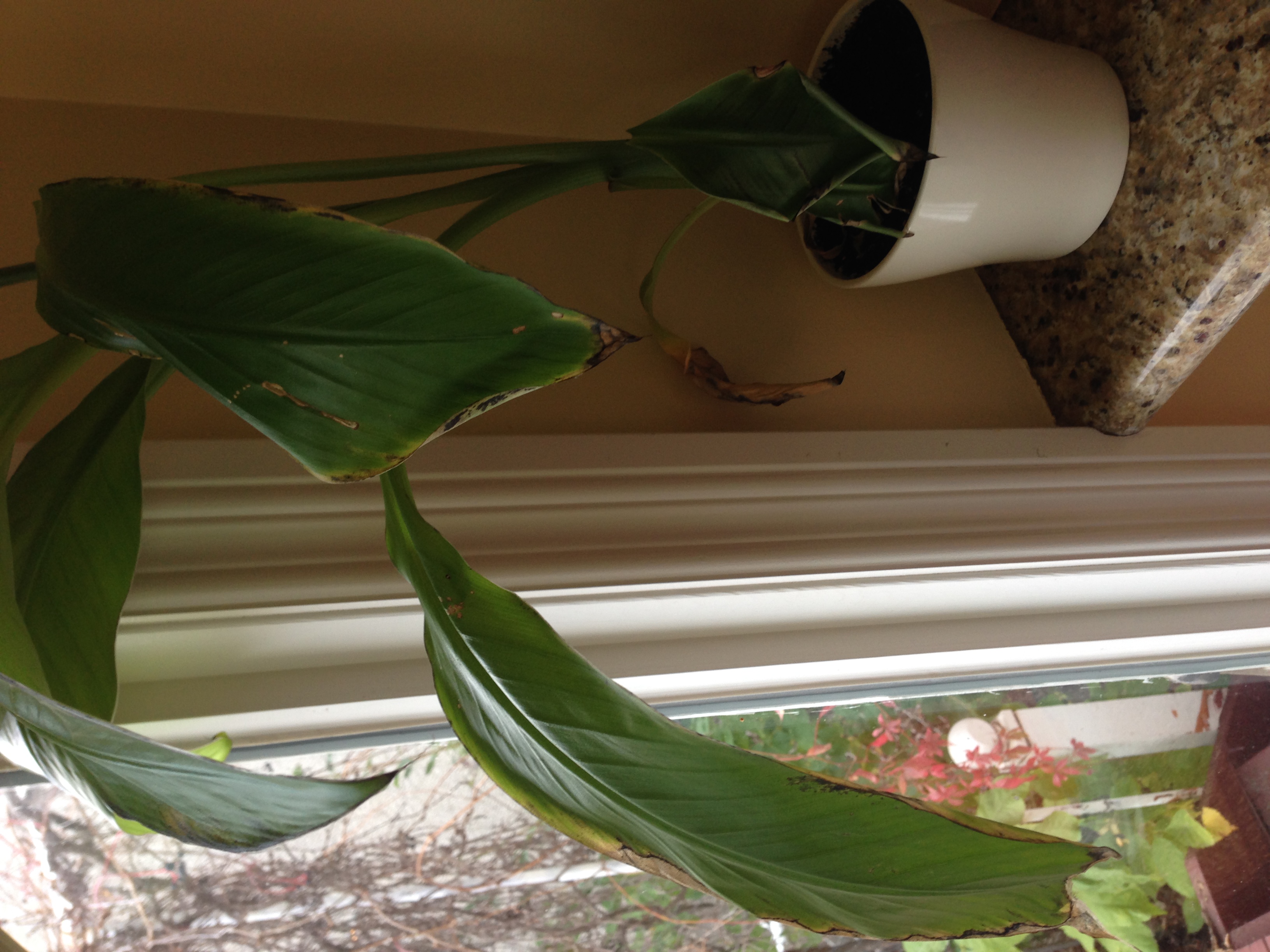I haven't been gardening for a while.... Mostly because of the move (and also that I only brought 2 of my previously numerous house plant collection with me to ON). My other plant babies are doing well though! =D The African violet had bloomed twice! The orange and lemon plant are flourishing. The banana plant is growing like a tree. The vine is trailing like crazy. And the shamrock, that for the life of me I could not consistently keep, is growing like wildfire in the care of Aaron. I am very pleased and grateful to all my plant caring friends. <3
But yes. Orchid.
Repotting orchids is a very easy but delicate task. As long as you've got the right substrate (bark and what-not) and the right sized pot (not too big and not too small!) the rest is easy. As there are many different kinds of orchids it's best to research the one that you have before adventuring to repot it. Some prefer bark, some prefer soil, and some prefer just moss. If you have no idea what kind of orchid you have (like me!) then it may be best to buy a mix of bark and soil (usually a generic orchid substrate).
STEP 1 - Gathering the Materials
The first thing you'll want to do is buy your repotting necessities. Mainly, a suitably sized plastic pot with large drainage holes, or orchid pot. Usually you can buy these types of pots right besides the orchid substrates at your local garden shop or flower store, which you'll need to purchase too.
STEP 2 - Soaking the bark
Now that you've got all your materials, the bark needs soaking. Measure out enough substrate into your orchid pot to go almost to the brim. Empty the measured substrate into a large bowl and fill it with just enough water to cover the bark. Use a plate to hold the floating bark under the water. Plastic wrap the top of the bowl and let the bark soak for 24 to 48 hours. Check the water level periodically and refill to cover the bark it necessary.
STEP 3 - Unpotting
After the bark has been soaked it's time to get this repotting started.
- First, it you don't have an outdoor space to do this, cover your space in newsprint, or do the remaining steps over a very large bowl.
- In your new orchid pot, fill it about 1/2 to 2/3rds full of the new pre-soaked substrate.
- Back to your orchid. Remove any moss surrounding your orchid from the top of the old substrate (you can still reuse this!). Set aside (I put it to soak in another bowl).
- Grasp your orchid firmly from it's base. If you need to remove some old substrate to get at the base do so carefully. Lift the orchid from it's base straight out of the old substrate. Discard the old substrate.
- Still holding the orchid from it's base, examine the roots. All the roots should be healthy looking aka fleshy and slightly stiff. If any look mouldy or overly limp trim them at the base or at its joints.
STEP 4 - Repotting
- Place the orchid base in the centre of the new orchid pot in the new pre-soaked substrate. Make sure that all your roots are delicately placed. Do not force them to fit. If you need to remove some substrate to make room for them then do so.
- Now that all your roots are placed within the orchid pot, while still holding the base centred in the pot, fill the remaining space around the roots and base with more pre-soaked substrate. Don't press the substrate in, simply let the bark and soil fall into place. You can shake the pot a bit (not to wildly) to make sure there are no gaps. You should now be able to remove your hand from the base and fill the remaining space with more substrate.
- TaDa! Now place the moss back on top of th new substrate. You did it!
STEP 5 - Wait.
This it the hardest part to do, if I'm honest. The orchid is most likely going to be unhappy for the next couple weeks (but keep to your regular watering schedule anyways). It won't initially like having had it's home moved and it's root system given a trim. But, it should be a lot happier in the long run. Maybe it will even flower...? Please Orchid?
-Andrea
The Half-Assed Hobbyist









































